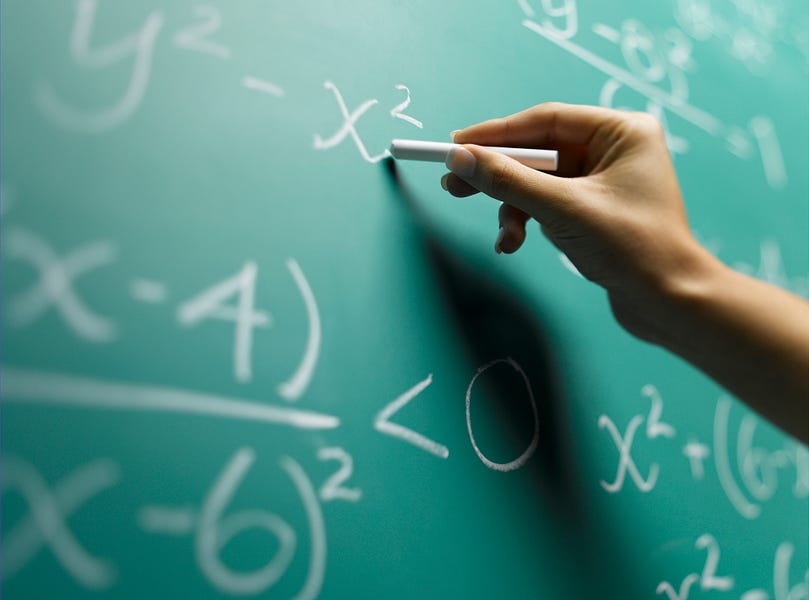In the four decades since the U.S. National Commission on Excellence in Education published its landmark report, “A Nation at Risk,” there’s been a sustained effort to push high schoolers to take more rigorous courses, with the sensible expectation that tougher classes will mean more learning. Well, consider that experiment half-successful. According to the recently released 2019 National Assessment of Educational Progress High School Transcript Study, students are taking more rigorous classes in science and math and they are getting better grades in those classes. The problem? They actually know less than students did a decade ago.
During the decade between 2009 and 2019, the share of 12th graders who took a rigorous or moderately rigorous slate of courses rose from 60 to 63 percent, and the average GPA of high school graduates climbed from a 3.0 to a 3.11—an all-time high. So far, so good. When we turn to how 12th graders actually fared on NAEP (the “nation’s report card”), though, we see that science scores stayed the same and that math scores actually fell by about 3 percent.
This isn’t the first time we’ve seen counterintuitive results like these. In 2009, Mark Schneider, now the commissioner of the U.S. Department of Education’s Institute of Education Sciences, found that decades of efforts to boost the number of students taking higher-level math classes had led to the dilution of those very classes. In particular, Schneider noted that, between 1990 and 2005, average math GPAs rose, as did the average number of math credits completed by high-school graduates. Furthermore, while only one-third of students completed algebra II in 1978, more than half did in 2008. And yet, despite all of this, NAEP scores for students in algebra I, geometry, and algebra II declined between 1978 and 2008.
In other words, more students were taking more advanced math and getting better grades—and yet our students knew less in 2008 than they did 30 years earlier. Schneider termed this phenomenon the “delusion of rigor” though it could equally well could be termed the “dilution of rigor.”
Combine Schneider’s analysis with this new research and it’s clear that, over the course of four decades, students have increasingly taken higher-level classes, have increasingly gotten better grades, and yet have increasingly known less.
It’s actually not that hard to figure out what’s going on: Schools have a lot of incentives to get students into more rigorous-sounding classes. Many states require that more students take such classes; equity-oriented advocates urge schools to enroll more low-income and minority students in advanced-sounding classes; and, perhaps most significantly, parents want schools to ensure that their children can enroll in courses that look good on college applications (this pressure only increases as colleges put less weight on the SAT or ACT). In short, there are lots of reasons why students are taking more high-level courses that have nothing to do with whether students are actually prepared for those courses.
But the problem isn’t just that schools are incentivized to stick students into classes they aren’t ready for. The problem is also that schools are incentivized to make those classes easier. Even as more students take more challenging courses, school and system leaders are under a lot of pressure to ensure that graduation rates keep rising. This puts pressure on schools and teachers to soften classes by simplifying instruction, shortening units, skipping difficult concepts, or just slapping an impressive-sounding name on a class that doesn’t deserve it.
Indeed, as National Center for Education Statistics commissioner Peggy Carr explained while discussing the results of the 2019 NAEP High School Transcript Study, “Algebra I is not Algebra I just because it’s labeled Algebra I.” She also noted, “We do have evidence from prior investigations that these courses may say they’re doing one thing, but they’re suspect about the rigor.”
Simply put, teachers have a lot of incentive to go easy on the grading, and little incentive not to. After all, grade inflation today can feel like the epitome of a victimless crime. Students are happy. Parents are happy. School leaders are happy. (There are precious few schools where principals are pressing teachers to give lower grades.) Handing out good grades makes a teacher’s life easier, whereas giving low grades can invite headaches and hassles.
In short, there are good reasons why we might expect students to take “more rigorous” courses and get better grades without not actually learning more. The more disconcerting possibility, of course, is that schools are so focused on course titles, graduating students, and handing out good grades, that they’ve wound up actually teaching students less than they previously did. If ever there were a compelling argument for why we need to keep the SAT, the ACT, and regular state testing, this is it.
Delusion of rigor, indeed.






Please note that we at The Dispatch hold ourselves, our work, and our commenters to a higher standard than other places on the internet. We welcome comments that foster genuine debate or discussion—including comments critical of us or our work—but responses that include ad hominem attacks on fellow Dispatch members or are intended to stoke fear and anger may be moderated.
With your membership, you only have the ability to comment on The Morning Dispatch articles. Consider upgrading to join the conversation everywhere.